
Find Help
More Items From Ergsy search
-

What is UV radiation?
Relevance: 100%
-

Is there a sunscreen that protects against all UV radiation?
Relevance: 48%
-
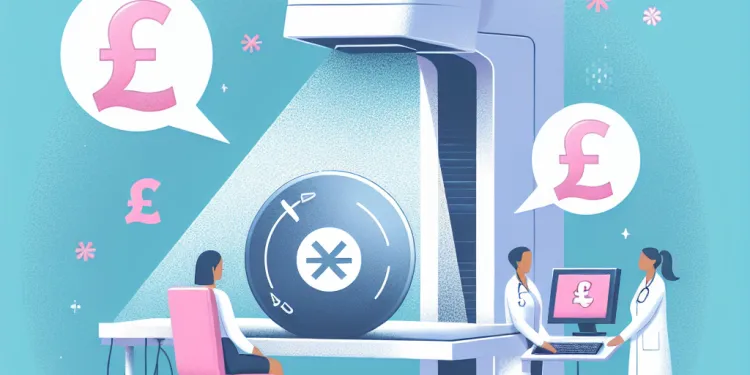
Are there any risks associated with mammograms?
Relevance: 31%
-
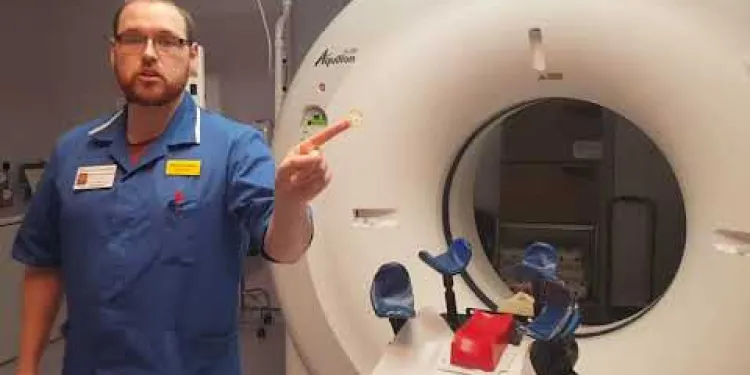
Radiotherapy CT scanner
Relevance: 28%
-
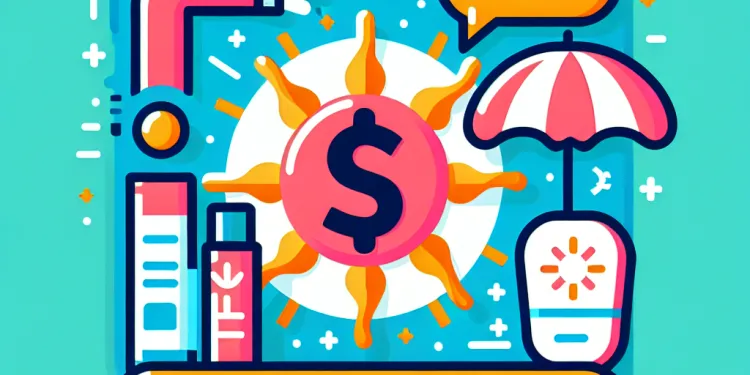
What causes sunburn?
Relevance: 26%
-

What types of treatments are available for testicular cancer?
Relevance: 26%
-
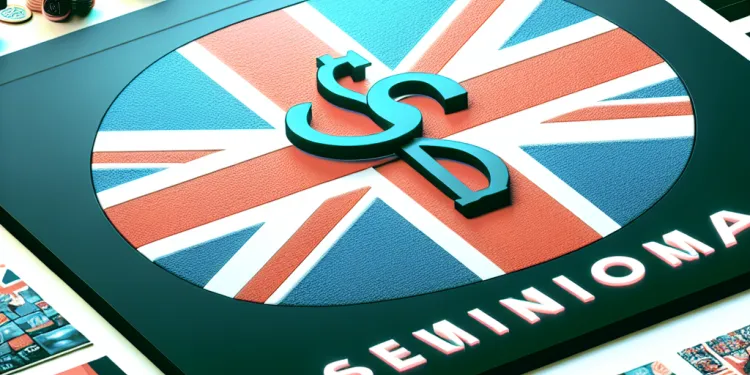
What is a seminoma?
Relevance: 24%
-
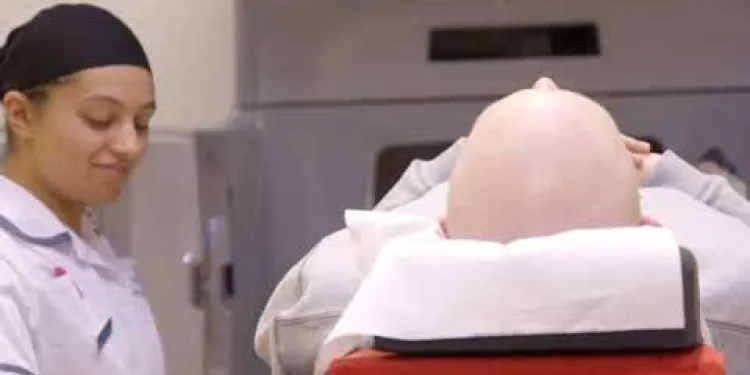
What is Radiotherapy, and its use in treatment for cancers?
Relevance: 23%
-
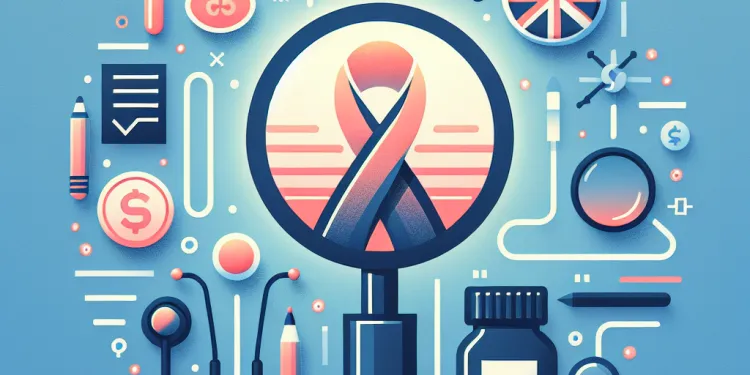
Is testicular cancer treatable?
Relevance: 23%
-

Treating prostate cancer
Relevance: 23%
-
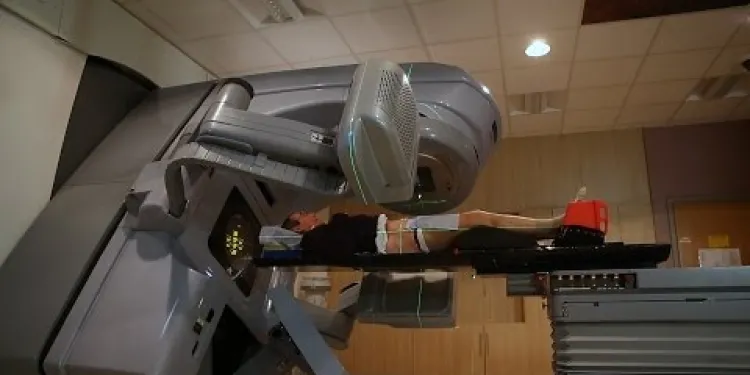
What is it like having Prostate Radiotherapy treatment?
Relevance: 21%
-

What are UVA and UVB rays?
Relevance: 21%
-

What's the difference between seminomas and non-seminomas?
Relevance: 21%
-
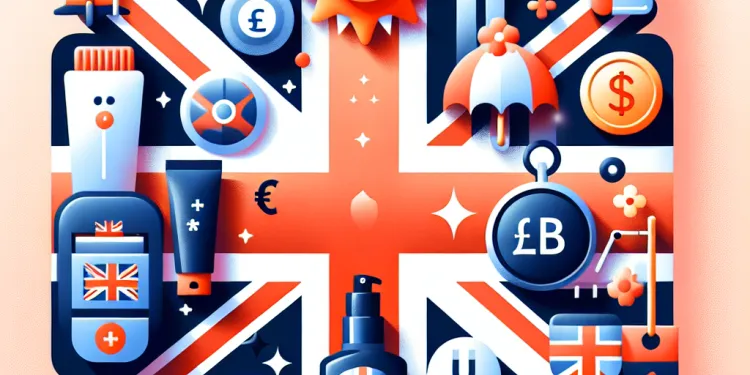
Do I need sunscreen on cloudy days?
Relevance: 21%
-

At what time of day is the sunburn risk highest?
Relevance: 21%
-

Can testicular cancer spread to other parts of the body?
Relevance: 20%
-

Cancer treatment: what happens during radiotherapy? | NHS
Relevance: 20%
-

What is colorectal cancer?
Relevance: 20%
-
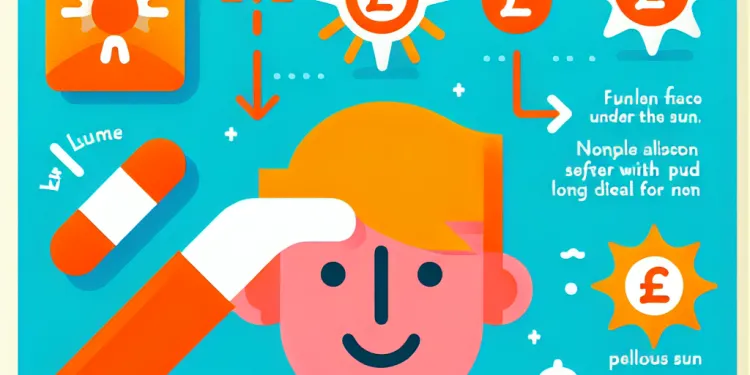
What are the long-term effects of sunburn?
Relevance: 20%
-

What's the difference between chemical and physical sunscreens?
Relevance: 20%
-

Skin cancer education
Relevance: 20%
-
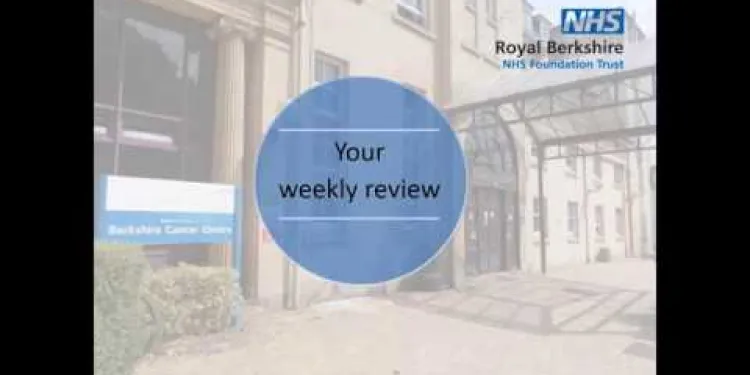
Royal Berkshire NHS Foundation Trust: Radiotherapy for prostate cancer
Relevance: 19%
-

Can sunburn turn into a tan?
Relevance: 19%
-
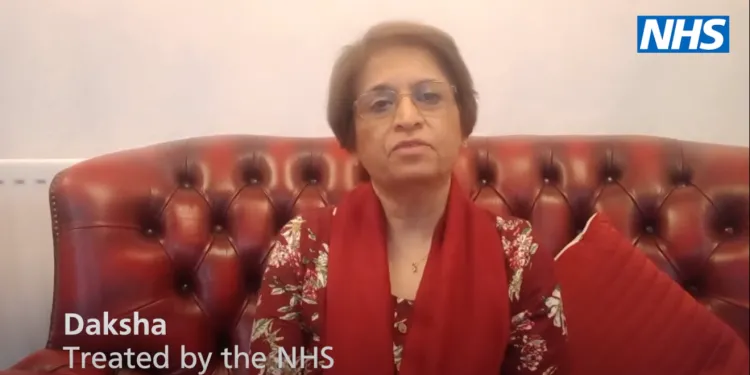
What is Cancer?
Relevance: 19%
-
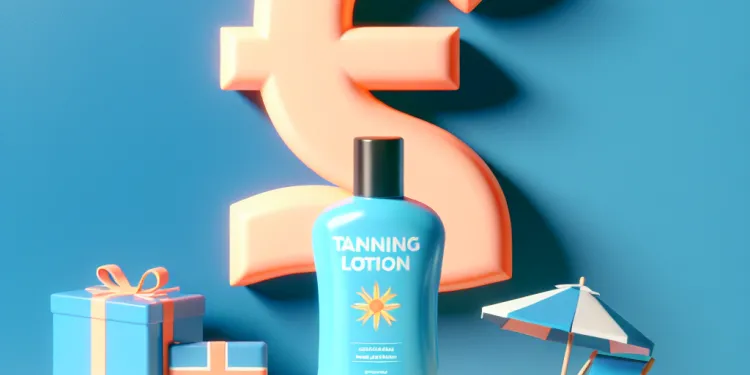
Does tanning lotion prevent sunburn?
Relevance: 18%
-
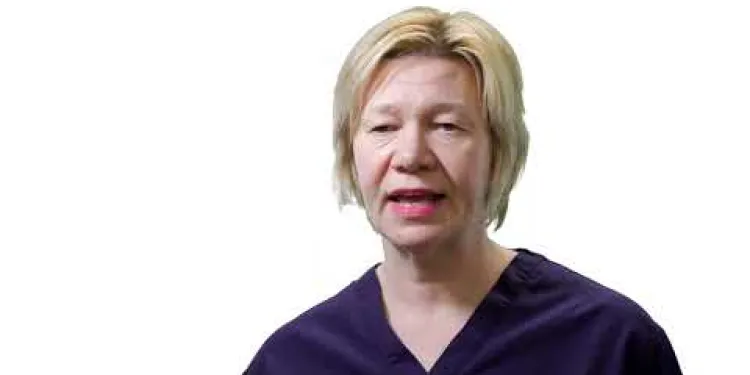
Head and Neck Cancer Diagnosis
Relevance: 18%
-
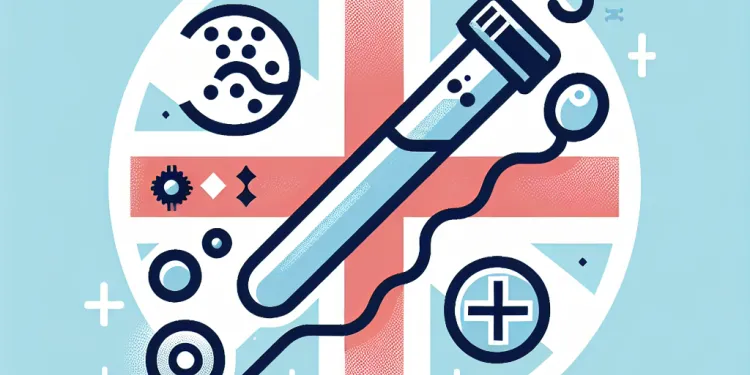
Is fertility affected by testicular cancer?
Relevance: 18%
-
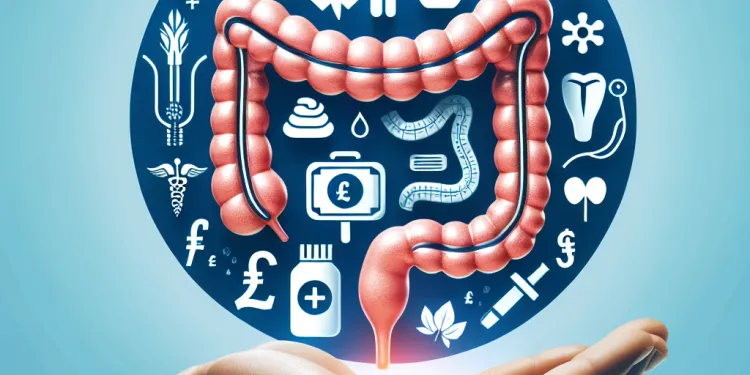
What are the side effects of bowel cancer treatment?
Relevance: 18%
-
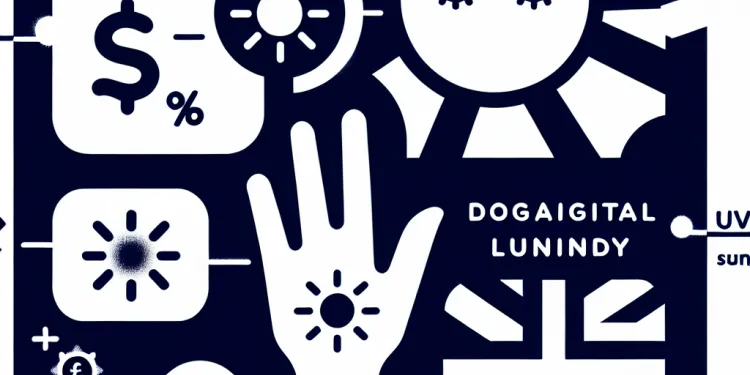
Are some people more prone to sunburn?
Relevance: 18%
-
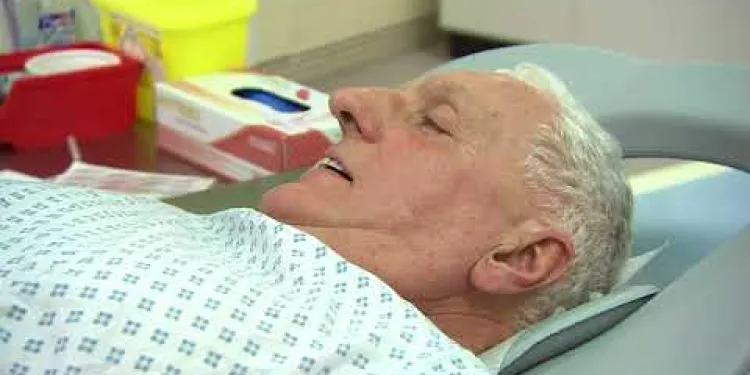
So, you're having a CT scan...
Relevance: 17%
-

Breakthrough in Cancer Treatment Offers Hope for Prostate Cancer Patients
Relevance: 17%
-
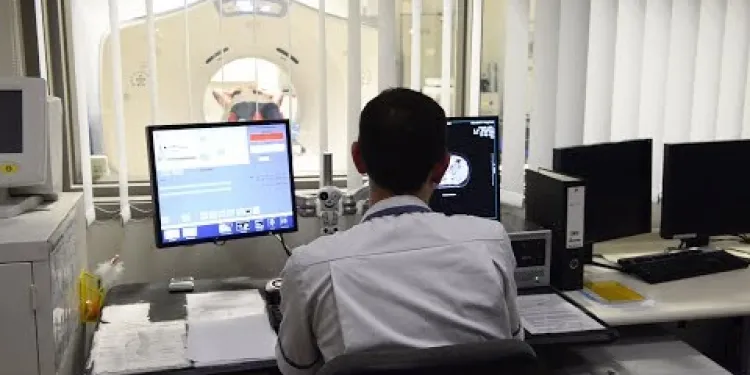
Having radiotherapy for breast cancer - 3 Videos
Relevance: 16%
-
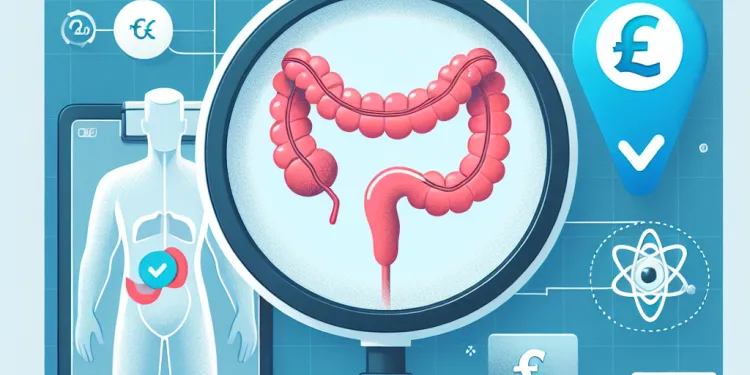
How is appendicitis diagnosed?
Relevance: 16%
-
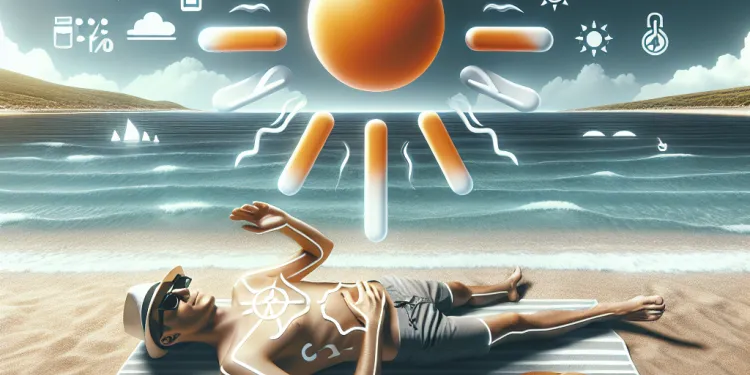
Can sunburns cause permanent damage?
Relevance: 16%
-

Royal Berkshire NHS Foundation Trust: Radiotherapy for head and neck cancers
Relevance: 16%
-

World Pancreatic Cancer Day - No Time to Wait
Relevance: 16%
-

Why do some people not burn as easily as others?
Relevance: 16%
-

Endometrial Cancer
Relevance: 15%
-
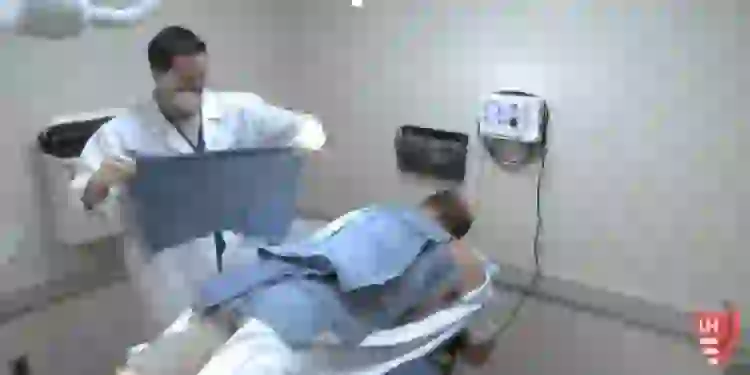
Mole Biopsy Finds Melanoma
Relevance: 15%
-

Is it possible to get sunburned on cloudy days?
Relevance: 15%
Understanding UV Radiation
Ultraviolet (UV) radiation is a form of electromagnetic radiation that comes from the sun and artificial sources like tanning beds. It is not visible to the human eye but has significant effects on the environment and human health. In the UK, public awareness about UV radiation is particularly important during summer months and in outdoor activities where exposure is most likely.
Types of UV Radiation
UV radiation is categorized into three main types: UVA, UVB, and UVC. UVA has the longest wavelength and can penetrate deep into the skin, leading to aging effects. UVB is responsible for causing sunburns and has a medium wavelength. Both UVA and UVB can contribute to the risk of skin cancer. UVC has the shortest wavelength but is mostly absorbed by the Earth's ozone layer and does not reach the ground.
Effects of UV Radiation
Excessive exposure to UV radiation can have harmful effects on humans. It is a leading cause of skin cancer, including melanoma and non-melanoma types. UV radiation can also cause eye problems, such as cataracts, and can suppress the immune system. On the other hand, it is also beneficial in small amounts as it aids in the production of Vitamin D in the skin, which is vital for bone health.
Protection Against UV Radiation
To minimize risks associated with UV exposure, it is crucial for people in the UK to take protective measures, especially during peak sun hours. These include wearing protective clothing, using broad-spectrum sunscreens with SPF 30 or higher, wearing sunglasses with UV protection, and seeking shade when the sun's rays are strongest. The use of hats to shield the face and neck is also recommended for added protection.
Interesting Facts About UV Radiation
Despite the cloudy weather often found in the UK, UV radiation can still penetrate and cause harm, as clouds filter out a limited amount of UV rays. Snow, sand, and water can reflect UV radiation, increasing exposure risks. It is also worth noting that tanning beds, widely used in the UK, emit UV radiation that can be more intense than sunlight and substantially raise the risk of skin damage.
Conclusion
Understanding UV radiation and its effects is critical for health and safety. By being informed and taking preventive measures, individuals in the UK can reduce their risk of health problems associated with UV exposure while enjoying the outdoors safely. Government campaigns and health advisories often highlight the importance of UV safety, urging people to be mindful of UV radiation year-round.
Understanding UV Radiation
Ultraviolet (UV) radiation comes from the sun and things like tanning beds. You can't see UV radiation, but it can affect you and the world around you. In the UK, it’s important to know about UV radiation, especially in the summer when people are outside more.
Types of UV Radiation
There are three types of UV radiation: UVA, UVB, and UVC. UVA can go deep into your skin and make it look older. UVB causes sunburn. Both UVA and UVB can lead to skin cancer. UVC is mostly stopped by the ozone layer and doesn't reach the ground.
Effects of UV Radiation
Too much UV radiation can hurt you. It can cause skin cancer and problems with your eyes, like cataracts. It can also weaken your immune system. But a little bit of UV radiation helps your skin make Vitamin D, which is good for your bones.
Protection Against UV Radiation
You can protect yourself from UV radiation by doing a few things, especially in the sunniest parts of the day. Wear protective clothes and hats, use sunscreen with SPF 30 or higher, wear sunglasses that block UV rays, and find shade. This helps keep you safe from the sun.
Interesting Facts About UV Radiation
Even if it is cloudy in the UK, UV radiation can still reach you. Clouds only block some of the UV rays. Snow, sand, and water can bounce UV rays back at you. Tanning beds give off strong UV radiation, often stronger than the sun, and can harm your skin.
Conclusion
Knowing about UV radiation is important for staying healthy. By learning about it and being careful, people in the UK can lower their risk and still have fun outdoors. The government often reminds people to be safe in the sun all year round.
Frequently Asked Questions
What is UV radiation?
UV radiation, or ultraviolet radiation, is a form of electromagnetic radiation that comes from the sun and is also emitted by artificial sources like tanning beds.
What are the types of UV radiation?
There are three main types of UV radiation: UVA, UVB, and UVC. UVA has the longest wavelength, followed by UVB, and then UVC with the shortest wavelength.
Is UV radiation harmful to humans?
Yes, excessive exposure to UV radiation can be harmful to humans, leading to skin damage, eye problems, and skin cancer.
How does UV radiation affect the skin?
UV radiation can damage the DNA in skin cells, cause sunburn, accelerate skin aging, and increase the risk of skin cancer.
Can UV radiation cause skin cancer?
Yes, UV radiation is a major risk factor for most skin cancers, including melanoma, basal cell carcinoma, and squamous cell carcinoma.
What are the sources of UV radiation?
The main source of UV radiation is the sun, but it can also be emitted by artificial sources like tanning beds, welders' torches, and mercury vapor lamps.
Can UV radiation affect the eyes?
Yes, exposure to UV radiation can cause eye damage, including cataracts, macular degeneration, and photokeratitis (sunburn of the cornea).
How can I protect myself from UV radiation?
To protect yourself, wear protective clothing, use broad-spectrum sunscreen, wear sunglasses that block UV, and seek shade during peak sun hours.
What is the UV index?
The UV index is a measure of the strength of sun's ultraviolet radiation at a particular place and time. It helps people understand their risk of exposure and take protective measures.
Is all UV radiation blocked by the ozone layer?
The ozone layer blocks most UVC and part of UVB radiation, but UVA and some UVB reach the Earth's surface.
Does UV radiation penetrate clouds?
Yes, UV rays can penetrate clouds, and overcast skies can still result in UV exposure.
Can UV radiation be used for disinfection?
Yes, UVC radiation is used for disinfection and sterilization, as it can kill bacteria and viruses by damaging their DNA.
Are all people equally sensitive to UV radiation?
Sensitivity to UV radiation varies among individuals, and those with lighter skin tend to be more susceptible to UV damage than those with darker skin.
Do windows block UV radiation?
Glass blocks most UVB and UVC rays but allows some UVA to pass through, so UVA exposure can still occur indoors.
Can clothing protect against UV radiation?
Yes, clothing can provide protection against UV radiation. Tightly woven fabrics and clothing with a high UPF rating offer the best protection.
What is a UPF rating?
UPF, or Ultraviolet Protection Factor, is a rating indicating how much UV radiation a fabric blocks. Higher UPF ratings offer greater protection.
Does UV radiation contribute to vitamin D production?
Yes, UVB radiation helps the skin synthesize vitamin D, which is important for bone health and immune function.
Are tanning beds a safe source of UV radiation?
No, tanning beds emit UV rays and can increase the risk of skin cancer and skin damage, just like natural sunlight.
How does altitude affect UV radiation exposure?
Higher altitudes receive stronger UV radiation because the thinner atmosphere absorbs less UV rays.
Can you get a sunburn in the winter?
Yes, UV rays can cause sunburn even in winter, especially when reflecting off snow or ice, which can intensify exposure.
What is UV radiation?
UV radiation is a kind of light from the sun. It's a bit like sunlight, but you can't see it. It can help make your skin warm and helps make vitamin D. But too much UV radiation can also be bad for your skin.
Tip: You can wear sunscreen, a hat, and sunglasses to protect your skin and eyes from UV radiation.
UV radiation is a type of energy from the sun. It can also come from things like tanning beds.
What kinds of UV rays are there?
UV rays are a kind of light from the sun. Here are the different types:
- UVA: These rays make your skin age faster.
- UVB: These rays can burn your skin.
- UVC: These rays get blocked by the Earth's atmosphere and do not reach us.
To learn more about UV rays, you can use pictures and videos to help understand.
There are three kinds of UV rays: UVA, UVB, and UVC. UVA rays are the longest. Next is UVB. UVC rays are the shortest.
Is UV light bad for people?
UV light is a kind of light that comes from the sun. It is a kind of sun ray.
Too much UV light can hurt your skin and eyes. It can also make you feel sick.
To stay safe, wear sunblock, sunglasses, and a hat when you go outside. This helps protect you from UV light.
Ask an adult if you have any questions or need help. They can help you stay safe in the sun.
Yes, too much time in the sun can be bad for you. It can hurt your skin, cause eye problems, and even lead to skin cancer.
Here are some ways to stay safe:
- Wear sunscreen to protect your skin.
- Wear sunglasses to protect your eyes.
- Stay in the shade when the sun is very strong.
What does UV radiation do to the skin?
The sun’s UV rays can hurt your skin. It can change the skin’s building blocks, cause sunburn, make your skin look older, and make it more likely for you to get skin cancer.
Can the sun's light cause skin cancer?
The sun gives off light and heat. This light is called UV radiation.
Too much sun can hurt skin. It can also cause skin cancer.
Stay safe by wearing sunscreen and hats. Stay in the shade when you can.
If you want more help, ask a doctor or look for more information about sun safety.
Yes, sunlight has UV rays that can hurt your skin and cause bad things like skin cancer. Skin cancer types are melanoma, basal cell carcinoma, and squamous cell carcinoma.
Where does UV light come from?
UV light comes from the sun. It is also in some lights and machines that people use, like tanning beds or lamps.
You can use things like sunglasses, hats, and sunscreen to help protect yourself from UV light.
The sun gives off UV rays. Other things can give off UV rays too, like sunbeds, welding torches, and special lights called mercury vapor lamps.
Can the sun hurt your eyes?
The sun gives off UV light. This light can hurt your eyes.
When you go outside, wear sunglasses. This will help protect your eyes.
It is good to wear a hat with a brim to keep the sun’s light away from your eyes.
These things help keep your eyes safe from the sun.
Yes, being in the sun too much can hurt your eyes. It can cause problems like cataracts, where your eye lens gets cloudy. It can also cause macular degeneration, which makes it hard to see. Another thing it can cause is photokeratitis, which is like a sunburn on your eye.
How can I stay safe from the sun's UV rays?
The sun gives off UV rays. These rays can hurt your skin. Here are some easy ways to keep safe:
- Wear sunscreen: Put on sunscreen lotion. Look for SPF 30 or higher.
- Use a hat and sunglasses: A hat with a wide brim and sunglasses can help a lot.
- Stay in the shade: Stay under trees or umbrellas when the sun is strong.
- Wear long clothes: Long-sleeve shirts and pants can protect your skin.
- Check the UV index: See how strong the sun is each day. Some weather apps can help.
Remember, using these tips can help keep your skin safe. Ask someone for help if you need it.
To stay safe in the sun, you can do these things: wear clothes that cover your skin, put on sunscreen that protects you from all kinds of sun rays, wear sunglasses to protect your eyes, and sit in the shade when the sun is very strong.
What is the UV index?
The UV index is a number. It tells us how strong the sun is. A higher number means the sun can hurt our skin.
The UV index helps us know when to be careful. We should wear hats, sunglasses, and sunscreen when the UV index is high.
Here are some tips:
- Check the weather app for the UV index.
- Stay in the shade when the UV index is high.
- Wear a hat and sunglasses.
- Use sunscreen to protect your skin.
The UV index tells us how strong the sun is in a certain place at a certain time. It helps us know if we need to protect our skin from the sun.
Does the ozone layer stop all UV rays?
The ozone layer is a part of the air around Earth.
It can stop some harmful UV rays from the sun.
But it cannot stop all UV rays.
Some UV rays still reach us, so it's important to use sunscreen and wear hats when outside. This keeps our skin safe.
The ozone layer is like a shield in the sky. It stops most of the dangerous rays from the sun called UVC. It also blocks some of the UVB rays. But UVA rays and a little bit of UVB rays can still reach the ground.
Can UV rays go through clouds?
Yes, sunlight can go through clouds. Even when the sky is cloudy, you can still get sunburn from UV rays.
Can UV light clean things?
UV light is a kind of light we can't see. It can kill germs and make things clean.
People use UV light to clean water, air, and surfaces. It helps stop the spread of germs and keeps us healthy.
Here are some tools that help understand UV light:
- Pictures or videos about UV light.
- Apps that show how UV light works.
Yes, UVC light is used to clean things because it can kill germs and viruses by breaking their DNA.
Does UV radiation affect everyone the same?
No, it does not affect everyone the same way.
Some people have lighter skin that can burn quickly in the sun.
Others have darker skin that may not burn as easily.
It is important for everyone to stay safe in the sun.
Here are some ways to stay safe:
- Wear sunscreen to protect your skin.
- Put on a hat to shade your face.
- Wear sunglasses to shield your eyes.
- Stay in the shade or indoors when the sun is very strong.
Some people can get hurt by sunlight more easily than others. People with lighter skin usually get hurt by sunlight more easily than people with darker skin.
Do windows stop UV light?
Some windows can stop UV light, which is a type of sunlight that can hurt our skin. But not all windows can do this. It is important to check.
To stay safe from UV light, you can:
- Use special window film that blocks UV light.
- Wear sunscreen when sitting near windows.
- Use curtains or blinds to cover windows when it's sunny.
Glass stops most UVB and UVC rays, but some UVA rays can still come through. This means you can still get UVA rays inside.
Can clothes keep you safe from the sun?
Yes, some clothes can help protect your skin from the sun's strong rays. The sun gives off something called UV rays, which can hurt your skin. Wearing the right clothes can help keep these rays away.
Here are some ways to protect yourself with clothes:
- Wear long sleeves and pants to cover your skin.
- Choose clothes made from tightly woven fabric. This means the threads are close together, which blocks more sun.
- Look for clothes with a special label that says "UPF." This means they have extra protection against the sun.
- Wearing a big hat and sunglasses can also help protect your face and eyes.
For more help, you can:
- Use pictures to see how to dress for sun protection.
- Ask a friend or family member to help you pick the right clothes.
- Watch a video that shows how to stay safe in the sun.
Yes, clothes can help keep you safe from the sun. Clothes made with thick fabric and a high UPF rating are the best.
What does UPF mean?
UPF tells us how well clothes block the sun. It's a number that helps us know how much sun protection the clothes give us.
Support tip: Use sunscreen and wear a hat for extra sun safety.
UPF means Ultraviolet Protection Factor. It tells us how well a fabric stops UV rays from the sun. High UPF numbers mean better protection.
Does UV light help make vitamin D?
Can sunlight help your body make vitamin D? UV light from the sun helps your skin make vitamin D. Vitamin D is important for strong bones.
Try these tips to learn more:
- Ask a grown-up to explain how sunlight helps your body.
- Use pictures or diagrams to see how UV light works.
- Watch a video about vitamin D and sunlight.
Yes, sunlight has UVB rays that help your skin make vitamin D. Vitamin D is good for strong bones and keeping you healthy.
Are tanning beds safe for your skin?
No, tanning beds are not safe. They give out UV rays. These rays can hurt your skin and make it more likely to get skin cancer, just like the sun.
Helpful Tip: Use sunscreen to protect your skin and wear a hat or clothing to cover up when in the sun.
How does height affect sunlight safety?
When you go up higher, like up a mountain, the sun's light can be stronger. This is because there is less air to block the light.
It is important to wear sunscreen and a hat to protect your skin from the sun.
Using sunglasses can help keep your eyes safe from the bright light.
Mountains are closer to the sun. So, they get more strong sunlight. The air is thinner up there and doesn’t block as much sunlight.
Tools that can help you understand this better are:
- Use a dictionary to look up hard words.
- Ask someone to read it with you.
- Watch videos about how sunlight works.
Can you get a sunburn in the winter?
Yes, you can get a sunburn in the winter. The sun is still strong, even when it's cold. The snow can also reflect the sunlight and make it stronger.
Here are some tips to protect yourself:
- Wear sunscreen, even in winter.
- Put on a hat and sunglasses when outside.
- Stay in the shade when you can.
Yes, the sun can burn your skin, even in winter. This can happen when sunlight bounces off snow or ice. It can make the sunburn worse.
Useful Links
- Ergsy carfully checks the information in the videos we provide here.
- Videos shown by Youtube after a video has completed, have NOT been reviewed by ERGSY.
- To view, click the arrow in centre of video.
- Most of the videos you find here will have subtitles and/or closed captions available.
- You may need to turn these on, and choose your preferred language.
- Go to the video you'd like to watch.
- If closed captions (CC) are available, settings will be visible on the bottom right of the video player.
- To turn on Captions, click settings .
- To turn off Captions, click settings again.
More Items From Ergsy search
-

What is UV radiation?
Relevance: 100%
-

Is there a sunscreen that protects against all UV radiation?
Relevance: 48%
-

Are there any risks associated with mammograms?
Relevance: 31%
-

Radiotherapy CT scanner
Relevance: 28%
-

What causes sunburn?
Relevance: 26%
-

What types of treatments are available for testicular cancer?
Relevance: 26%
-

What is a seminoma?
Relevance: 24%
-

What is Radiotherapy, and its use in treatment for cancers?
Relevance: 23%
-

Is testicular cancer treatable?
Relevance: 23%
-

Treating prostate cancer
Relevance: 23%
-

What is it like having Prostate Radiotherapy treatment?
Relevance: 21%
-

What are UVA and UVB rays?
Relevance: 21%
-

What's the difference between seminomas and non-seminomas?
Relevance: 21%
-

Do I need sunscreen on cloudy days?
Relevance: 21%
-

At what time of day is the sunburn risk highest?
Relevance: 21%
-

Can testicular cancer spread to other parts of the body?
Relevance: 20%
-

Cancer treatment: what happens during radiotherapy? | NHS
Relevance: 20%
-

What is colorectal cancer?
Relevance: 20%
-

What are the long-term effects of sunburn?
Relevance: 20%
-

What's the difference between chemical and physical sunscreens?
Relevance: 20%
-

Skin cancer education
Relevance: 20%
-

Royal Berkshire NHS Foundation Trust: Radiotherapy for prostate cancer
Relevance: 19%
-

Can sunburn turn into a tan?
Relevance: 19%
-

What is Cancer?
Relevance: 19%
-

Does tanning lotion prevent sunburn?
Relevance: 18%
-

Head and Neck Cancer Diagnosis
Relevance: 18%
-

Is fertility affected by testicular cancer?
Relevance: 18%
-

What are the side effects of bowel cancer treatment?
Relevance: 18%
-

Are some people more prone to sunburn?
Relevance: 18%
-

So, you're having a CT scan...
Relevance: 17%
-

Breakthrough in Cancer Treatment Offers Hope for Prostate Cancer Patients
Relevance: 17%
-

Having radiotherapy for breast cancer - 3 Videos
Relevance: 16%
-

How is appendicitis diagnosed?
Relevance: 16%
-

Can sunburns cause permanent damage?
Relevance: 16%
-

Royal Berkshire NHS Foundation Trust: Radiotherapy for head and neck cancers
Relevance: 16%
-

World Pancreatic Cancer Day - No Time to Wait
Relevance: 16%
-

Why do some people not burn as easily as others?
Relevance: 16%
-

Endometrial Cancer
Relevance: 15%
-

Mole Biopsy Finds Melanoma
Relevance: 15%
-

Is it possible to get sunburned on cloudy days?
Relevance: 15%


